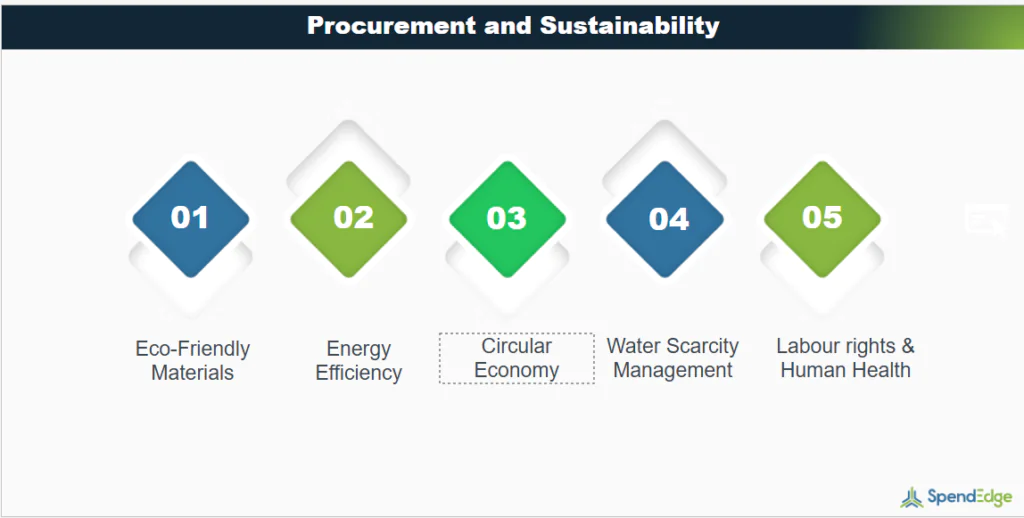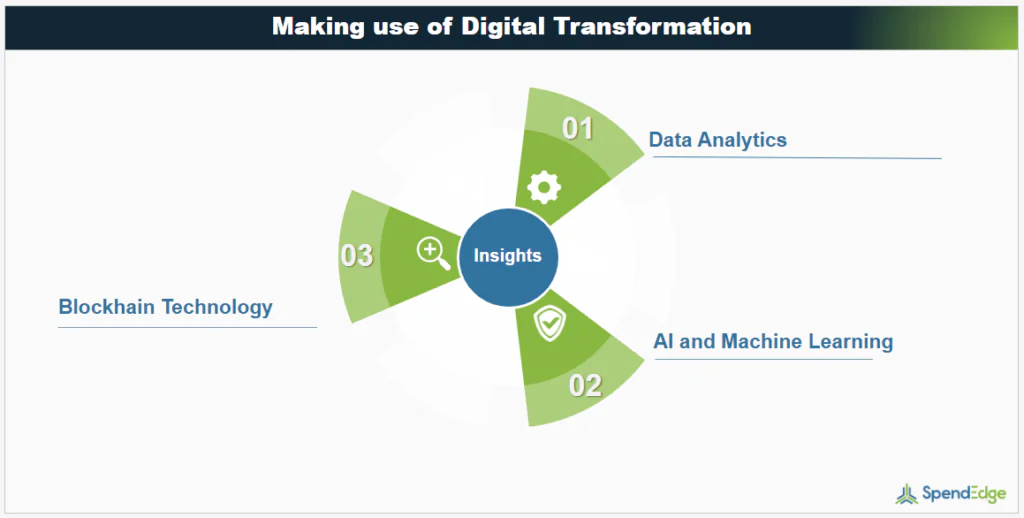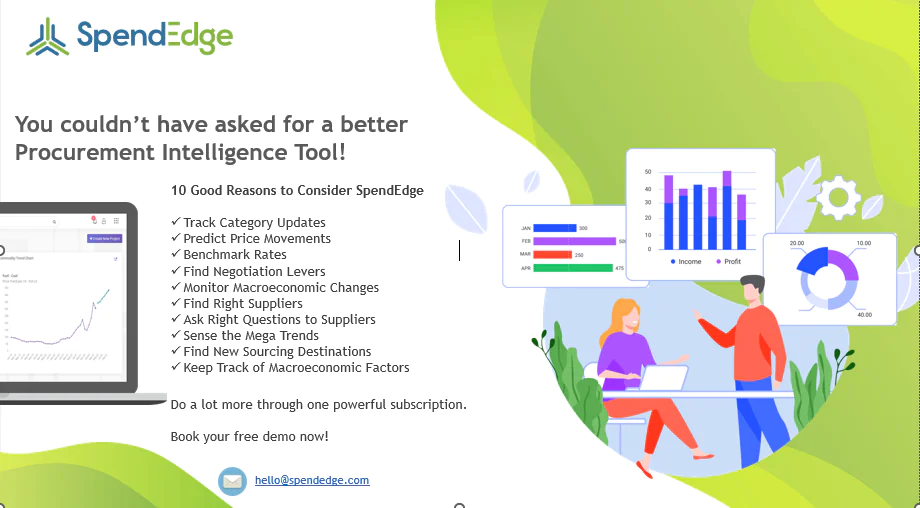The semiconductor industry is a cornerstone of modern technology, underpinning everything from smartphones to advanced computing systems. As the demand for semiconductors continues to soar, the procurement strategies employed by companies in this sector have become increasingly critical. Effective procurement is not just about securing materials but also about managing complex supply chains, mitigating risks, and ensuring sustainability.
Understanding the Semiconductor Supply Chain
The semiconductor supply chain is intricate and global, involving numerous stages from raw material extraction to chip fabrication and final product assembly. Key materials include silicon, rare earth elements, and various chemicals, all of which must meet stringent quality standards. The complexity is heightened by the geographic dispersion of suppliers, with critical nodes in East Asia, the United States, and Europe. For instance, the automotive industry heavily relies on these chips for modern vehicle functionalities.
Strategic Sourcing Best Practices

- Supplier Diversification: One of the fundamental strategies in semiconductor procurement is diversifying the supplier base. Relying on a single supplier or region can be risky, as demonstrated by recent geopolitical tensions and natural disasters. Companies should establish relationships with multiple suppliers across different regions to ensure a steady supply of critical materials.
- Long-term Partnerships: Building long-term, collaborative relationships with key suppliers can lead to better quality, reliability, and innovation. These partnerships often involve joint development agreements, where suppliers and manufacturers work together to advance technology and improve processes.
- Technology Integration: Leveraging advanced technologies such as artificial intelligence (AI) and blockchain can enhance procurement efficiency and transparency. AI can predict demand and optimize inventory levels, while blockchain ensures traceability and reduces the risk of counterfeit components.
Risk Management
- Supply Chain Visibility: Achieving end-to-end visibility in the supply chain is crucial for identifying potential disruptions early. This can be accomplished through digital platforms that provide real-time data on inventory levels, supplier performance, and logistics.
- Scenario Planning: Companies should develop and regularly update risk mitigation plans for various scenarios, including geopolitical conflicts, natural disasters, and pandemics. These plans should outline alternative sourcing strategies and contingency measures.
- Inventory Management: Maintaining strategic stockpiles of critical materials can buffer against supply chain disruptions. However, this must be balanced with the costs associated with holding inventory.
Impact of the CHIPS Act
The CHIPS Act, a significant legislative initiative in the United States, aims to bolster domestic semiconductor manufacturing and reduce dependency on foreign suppliers. By providing substantial funding for semiconductor research, development, and production, the CHIPS Act is expected to enhance the resilience of the U.S. semiconductor supply chain. For procurement strategies, this means an increased focus on local sourcing and collaboration with newly established domestic manufacturers, reducing the risk associated with long international supply chains.
Sustainability in Procurement
Sustainability is becoming a critical component of procurement strategies in the semiconductor industry. Companies are increasingly being held accountable for the environmental and social impacts of their supply chains. Key practices include:

- Eco-friendly Materials: Sourcing materials that have a lower environmental impact, such as recycled or sustainably mined metals. For example, reducing carbon emissions during the production of silicon wafers is crucial.
- Energy Efficiency: Partnering with suppliers who use renewable energy sources and have robust energy management practices. This reduces the overall carbon footprint and aligns with global sustainability goals.
- Circular Economy: Implementing strategies to recycle and reuse materials, thereby reducing waste and lowering the overall environmental footprint. Semiconductor companies are investing in recycling technologies to reclaim valuable materials from used components.
- Water Scarcity Management: Given the significant water usage in semiconductor manufacturing, companies must adopt water recycling and conservation measures. This is particularly important in regions facing water scarcity.
- Labor Rights and Human Health: Ensuring that suppliers adhere to fair labor practices and prioritize the health and safety of their workers. This includes regular audits and certifications to verify compliance.
Strategic Role of Outsourcing
Outsourcing certain aspects of semiconductor manufacturing and procurement can lead to significant cost savings and operational efficiencies. However, it also introduces risks related to quality control and intellectual property protection. To navigate these challenges:
- Vendor Selection: Careful selection of outsourcing partners based on their technological capabilities, quality standards, and compliance with regulations.
- Contract Management: Establishing clear contracts that outline performance metrics, quality standards, and intellectual property protections.
- Regular Audits: Conducting regular audits of outsourced operations to ensure compliance with agreed-upon standards and practices.
Addressing Emerging Challenges in 2024
The semiconductor industry faces several emerging challenges in 2024 that necessitate agile and robust procurement strategies. These include:
- Geopolitical Tensions: Trade disputes and regulatory changes can disrupt supply chains. Companies must stay informed about geopolitical developments and adjust their procurement strategies accordingly. The possible fallout between China and Taiwan is a significant concern, given Taiwan’s crucial role in the global semiconductor supply chain.
- Technological Advancements: Rapid technological changes require procurement teams to stay abreast of new developments and ensure that their suppliers can meet evolving technical specifications.
- Labor Shortages: The semiconductor industry is grappling with a shortage of skilled labor. This impacts not only manufacturing but also procurement, as finding and retaining qualified procurement professionals becomes more challenging.
- Material Shortages: In 2024, the semiconductor industry continues to face shortages of key materials such as silicon and rare earth elements. These shortages are driven by increased demand and supply chain disruptions, necessitating careful planning and strategic sourcing.
- Cybersecurity Risks: As supply chains become more digitized, they are increasingly vulnerable to cyberattacks. Companies must invest in robust cybersecurity measures to protect their supply chain data and ensure the integrity of their procurement processes.
- Environmental and Social Factors: Companies must navigate various environmental disruptions, such as natural disasters, which can impact production capacity and lead to a semiconductor shortage. Additionally, social factors like labor rights and community impacts are increasingly scrutinized.
Leveraging Digital Transformation
Digital transformation is reshaping procurement strategies in the semiconductor industry. Key digital tools include:

- Data Analytics: Leveraging big data analytics to gain insights into supplier performance, market trends, and cost-saving opportunities. For instance, predictive analytics can help manufacturers anticipate semiconductor shortages and plan accordingly. Companies like Intel and TSMC utilize advanced data analytics to optimize their supply chains, improve demand forecasting, and enhance production capacity utilization.
- Blockchain Technology: Ensuring transparency and traceability in the supply chain, reducing the risk of fraud and counterfeit products. Blockchain can be particularly beneficial in tracking the provenance of high-quality components and ensuring compliance with environmental and social standards. For example, IBM’s Food Trust blockchain is being adapted for semiconductor supply chains to provide secure, transparent, and immutable records of transactions.
- AI and Machine Learning: Implementing AI and machine learning algorithms to enhance procurement processes, such as supplier risk assessment and automated negotiation. AI can also be used to optimize inventory management by predicting demand and supply variations, thereby reducing the risk of overstocking or stockouts.
Building Resilience
Building a resilient supply chain is paramount in the semiconductor industry. This involves:
- Agile Supply Chains: Developing supply chains that can quickly adapt to changes in demand and supply conditions. This agility is crucial for meeting the high demand for consumer electronics and automotive semiconductors. For instance, companies like Samsung have implemented flexible manufacturing systems that can switch production lines quickly between different products to respond to market dynamics and demand fluctuations.
- Collaborative Networks: Creating networks of suppliers, manufacturers, and logistics providers who can work together to overcome disruptions. Companies like Qualcomm and NVIDIA foster collaborative relationships with their suppliers and logistics partners to ensure a reliable supply of quality components, even in the face of geopolitical tensions or environmental disruptions.
- Investment in Innovation: Continuously investing in new technologies and processes to stay ahead of potential disruptions and maintain a competitive edge. For example, Intel’s expansion plans include investing in cutting-edge fabrication technologies and capacity expansion to meet the growing demand for semiconductors in emerging fields such as 5G, artificial intelligence (AI), and the Internet of Things (IoT).
- Risk Mitigation Strategies: Implementing comprehensive risk management strategies to address potential disruptions. This includes diversifying the supplier base, maintaining strategic stockpiles, and developing contingency plans. For instance, Texas Instruments has established multiple manufacturing sites worldwide to mitigate the risk of production halts due to localized disruptions.
- Sustainability Initiatives: Integrating sustainability into procurement strategies to enhance resilience. This involves adopting eco-friendly materials, reducing carbon emissions, and ensuring water and energy efficiency. Companies like AMD are committed to sustainability, with initiatives focused on reducing their environmental footprint and promoting social responsibility throughout their supply chain.
Conclusion
Effective procurement strategies are essential for the semiconductor industry to navigate its complex, global supply chains and mitigate risks. By focusing on supplier diversification, long-term partnerships, advanced technologies, and sustainability, companies can enhance their procurement processes. The CHIPS Act represents a significant step towards strengthening domestic supply chains and reducing dependency on foreign sources. As the industry continues to evolve, agile and robust procurement strategies will be critical to ensuring sustained growth and resilience. Manufacturers must also consider the impacts of geopolitical tensions, such as the potential fallout between China and Taiwan, on the global semiconductor supply chain.





